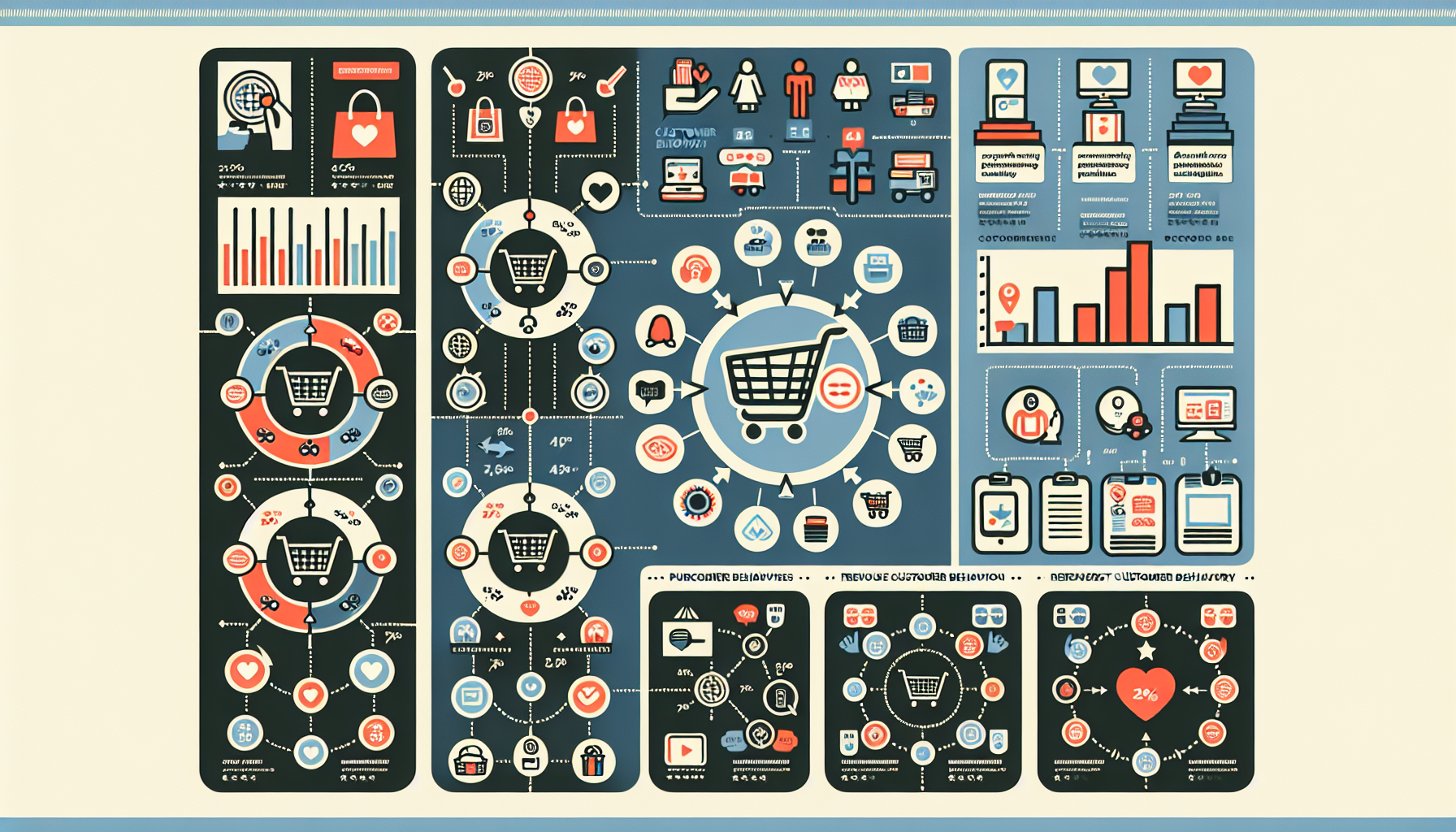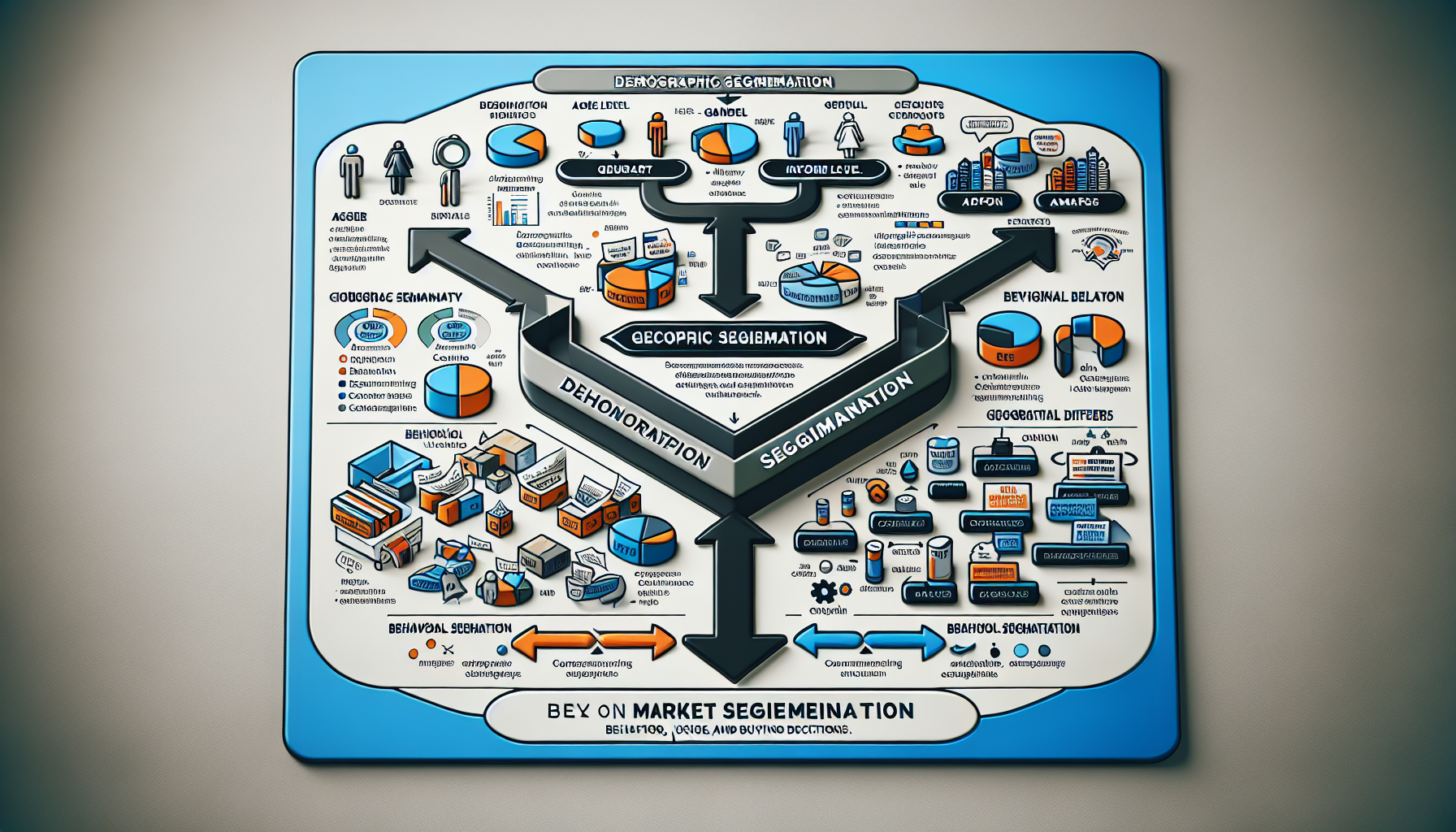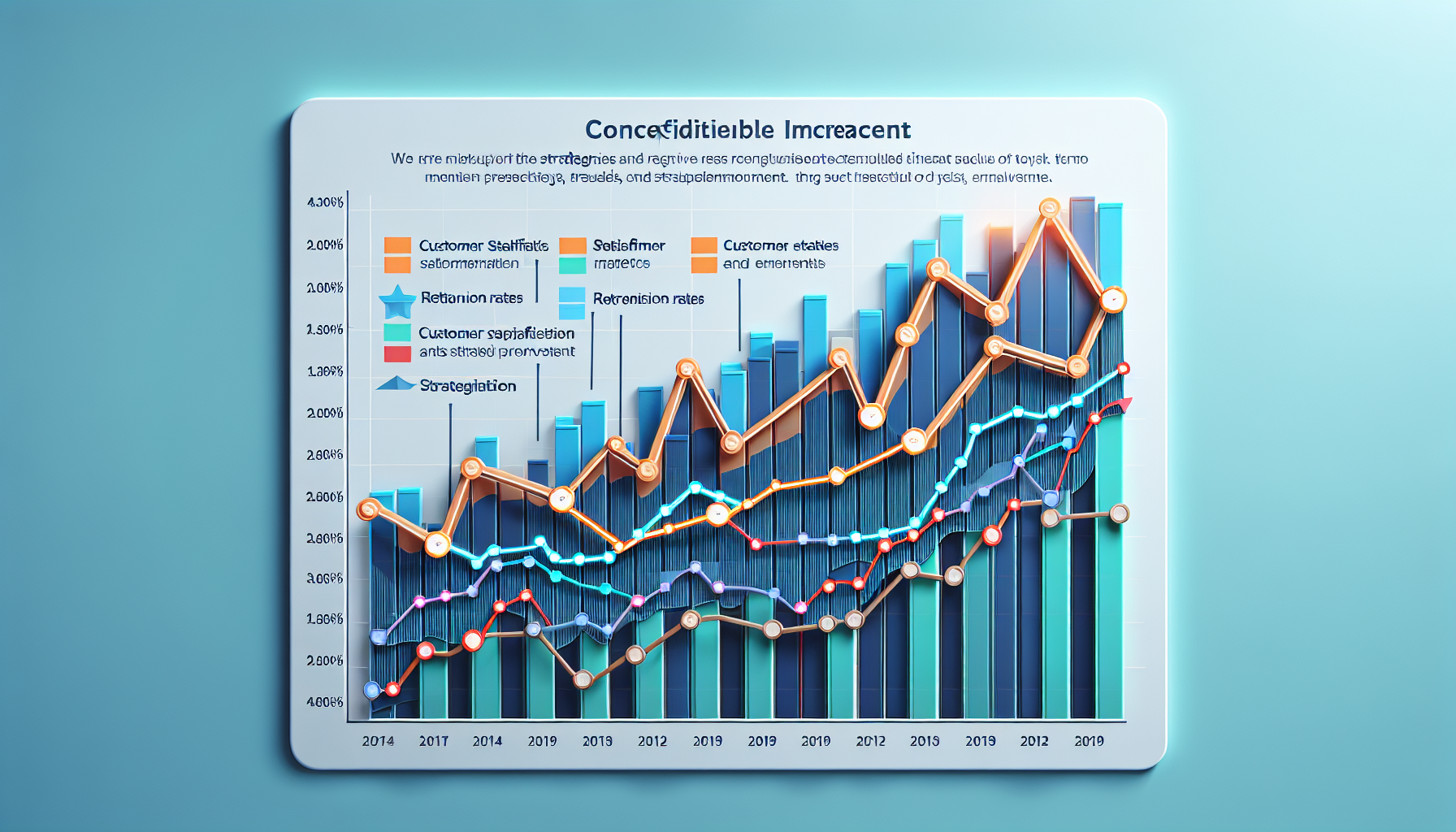Behavioral Segmentation in Customer Loyalty Programs: Why It Matters and Examples
Behavioral segmentation is a powerful tool in the marketer's arsenal, categorizing customers based on their actions and behaviors—such as purchase frequency, product usage, or interaction patterns. This approach allows businesses to understand their customers on a deeper level and tailor their strategies accordingly.

In the realm of customer loyalty programs, behavioral segmentation plays a crucial role. By leveraging insights derived from customer behaviors, businesses can design loyalty programs that not only meet but exceed customer expectations. This leads to enhanced customer satisfaction, increased engagement, and ultimately, higher revenue.
However, in order to effectively implement these strategies, it's vital for businesses to ensure that they maintain transparency with their customers. This includes being clear about how customer data will be used and stored. For instance, companies should have comprehensive privacy policies in place that detail these aspects. Furthermore, utilizing an effective intake process for collecting necessary data can streamline the entire operation. It's also essential to have clear terms of service that outline the rules and guidelines for using the loyalty program.
This article delves into the significance of behavioral segmentation in customer loyalty programs. We will explore:
- The fundamentals of behavioral segmentation and its distinction from other segmentation types.
- The critical role it plays in enhancing loyalty programs.
- Real-world examples highlighting successful implementations.
- Strategies for effectively integrating behavioral insights into your loyalty programs.
- Benefits observed by brands utilizing this approach.
By understanding these aspects, businesses can harness the full potential of behavioral segmentation to foster stronger customer relationships and drive growth. Additionally, having a robust intake-submitted process can further enhance the effectiveness of these loyalty programs by ensuring accurate data collection and usage.
Understanding Behavioral Segmentation

Explanation of Behavioral Segmentation
Behavioral segmentation is a marketing technique that divides customers into distinct groups based on their behavior patterns. This method focuses on how customers interact with a brand, including their purchasing habits, product usage, and engagement levels. By understanding these behaviors, businesses can create personalized experiences that cater to the specific needs and preferences of each segment.
How It Differs from Other Types of Segmentation
Behavioral segmentation stands apart from other common segmentation methods such as demographic and geographic segmentation. Here's a quick comparison:
- Demographic Segmentation: Groups customers based on characteristics such as age, gender, income, education level, and occupation.
- Geographic Segmentation: Divides customers based on their location, such as country, region, city, or neighborhood.
- Behavioral Segmentation: Focuses on customer actions and interactions with the brand rather than static attributes.
Unlike demographic or geographic segmentation that relies on who the customer is or where they are located, behavioral segmentation zeroes in on what the customer does. This makes it possible to tailor marketing efforts more precisely to drive engagement and loyalty.
Examples of Behaviors Used for Segmentation
Several specific behaviors can be used to segment customers effectively:
- Purchase Frequency: Identifies how often a customer buys from your brand. For instance:
- Frequent Buyers: Customers who purchase regularly.
- Occasional Buyers: Customers who purchase infrequently.
- One-time Buyers: Customers who have only made a single purchase.
- Product Usage: Examines how customers use your products or services. Examples include:
- Heavy Users: Customers who use the product intensively.
- Light Users: Customers who use the product sparingly.
- Non-users: Potential customers who have not started using the product yet.
- Engagement Levels: Tracks how customers interact with your brand across various touchpoints:
- Active Engagers: Regularly interact with your app, website, or social media channels.
- Passive Engagers: Interact occasionally or only when prompted by special offers.
- Disengaged Users: Have not interacted with your brand for a long period.
Behavioral segmentation provides deep insights into customer actions and preferences. This allows businesses to create highly targeted strategies that resonate with each segment's unique behavior patterns.
The Role of Behavioral Segmentation in Customer Loyalty Programs

Understanding customer behavior is a cornerstone of effective loyalty programs. Knowing what drives your customers allows you to tailor incentives and interactions that resonate deeply, enhancing both customer engagement and customer value. Behavioral segmentation offers a laser-focused lens through which you can view your customers' actions, preferences, and tendencies.
Importance of Understanding Customer Behavior for Loyalty Programs
Behavioral segmentation breaks down customer actions into identifiable patterns. For instance:
- Purchase Frequency: How often do customers buy from you?
- Product Usage: Which products or services do they use most frequently?
- Engagement Channels: Do they prefer interacting via mobile apps, websites, or in-store?
These insights are invaluable for crafting loyalty programs that feel personal and relevant. A customer who makes frequent small purchases may respond well to a points-based system, while a high-ticket spender might appreciate exclusive access or personalized discounts.
How Behavioral Insights Enhance Engagement Strategies
Behavioral insights empower businesses to create engagement strategies that align with customer preferences. Some key benefits include:
- Personalization: Tailoring rewards and communications based on individual behaviors makes your loyalty program more compelling.
“Personalization isn't just about using a customer's name; it's about delivering the right message at the right time,” says Jane Doe, marketing expert.
- Targeted Campaigns: By segmenting customers based on behavior, you can develop targeted campaigns that cater specifically to their needs and habits.
- Example: A retail store might send exclusive early-access sale notifications to frequent shoppers.
- Enhanced Customer Experience: Understanding behavioral data helps in refining the overall customer experience. You can eliminate friction points and introduce features that boost satisfaction.
- Example: An e-commerce platform could suggest complementary products based on past purchases, increasing the likelihood of repeat business.
Behavioral segmentation thus serves as an essential tool for any loyalty program aimed at maximizing customer engagement and customer value. By leveraging these insights, businesses can not only retain existing customers but also foster long-term loyalty.
Real-world Examples of Successful Loyalty Programs Using Behavioral Segmentation

Starbucks: Application of Push Notifications and Mobile App Features for Enhancing Loyalty
Starbucks leverages behavioral segmentation through its mobile app, which tracks customer purchases and preferences. By analyzing this data, Starbucks can:
- Send targeted push notifications: Announcing promotions like "Happy Hour" events to customers who frequently visit during specific times.
- Offer personalized rewards: Such as a free drink on a customer's birthday or discounts tailored to their usual orders.
These strategies help make the customer experience more personalized and engaging, leading to increased loyalty and higher sales.
Amazon: Recommendations Based on Past Behavior and Their Impact on Customer Retention
Amazon excels at using behavioral segmentation through its recommendation engine. The platform analyzes each customer's browsing history, purchase patterns, and even time spent on different product pages. This data is employed to:
- Suggest products that align with user interests: Enhancing the likelihood of additional purchases.
- Create a customized shopping experience: Curating homepages based on individual preferences.
By delivering relevant recommendations, Amazon has successfully boosted customer retention rates and increased average order values.
Mobile Premier League: Use of Behavioral Data to Boost Engagement Through Targeted Push Notifications
Mobile Premier League (MPL), an online gaming platform, utilizes behavioral segmentation to engage its users effectively. Through the CleverTap platform, MPL monitors in-game behaviors such as game preference, session duration, and frequency of play. These insights enable MPL to:
- Send real-time push notifications: Encouraging participation in tournaments or alerting users about new game releases.
- Tailor promotional offers: Based on user activity levels and game choices.
This targeted approach not only enhances user engagement but also drives repeat participation, contributing to sustained growth in active user base.
Behavioral segmentation stands out as a pivotal strategy for businesses aiming to deepen customer loyalty. By understanding and acting upon specific user behaviors, companies like Starbucks, Amazon, and Mobile Premier League are able to craft more meaningful interactions that foster long-term relationships.
However, implementing such advanced strategies may seem daunting for some businesses. That's where digital platforms like Lealtad come into play. Lealtad offers an easy-to-set-up digital loyalty program that can significantly boost your business sales and revenue by 25% or more.
Strategies for Implementing Behavioral Segmentation in Loyalty Programs

Implementing behavioral segmentation effectively requires a strategic approach that leverages key customer behaviors, personalized communication, and advanced technology platforms like the Lealtad App. Here are some essential strategies to consider:
Identifying Key Behaviors to Segment Customers Effectively
Understanding which behaviors are most indicative of customer value is the first step in effective segmentation. Focus on identifying patterns that reveal the preferences and tendencies of your customers. Key behaviors to monitor include:
- Purchase Frequency: Regular vs. occasional buyers
- Product Usage: Heavy, moderate, or light usage patterns
- Engagement Levels: Interaction with marketing content, open rates for emails, clicks on push notifications
- Churn Indicators: Signs of declining interest or disengagement
By concentrating on these behaviors, businesses can create more meaningful segments that reflect actual customer actions and preferences.
Creating Tailored Communication Strategies Based on Segmented Groups
Once you have identified and segmented customers based on key behaviors, it’s crucial to tailor your communication strategies to align with the needs and preferences of each group. Customizing your messaging can significantly enhance engagement and loyalty. Consider the following approaches:
- Personalized Offers: Send exclusive discounts or offers tailored to individual purchasing habits.
- Targeted Content: Share content that resonates with specific segments' interests and past interactions.
- Timing Optimization: Schedule communications at times when each segment is most likely to engage.
For instance, heavy users might appreciate early access to new products, while occasional buyers may respond better to limited-time discounts.
Leveraging Lealtad App’s Capabilities for Campaign Orchestration and Personalization
The Lealtad App offers a suite of tools designed to streamline the implementation of behavioral segmentation in loyalty programs. Utilizing these capabilities can significantly boost the effectiveness of your campaigns.
Campaign Orchestration
Lealtad App enables businesses to:
- Automate Segmentation Processes: Automatically categorize customers based on real-time behavioral data.
- Coordinate Multi-channel Campaigns: Integrate email, push notifications, SMS, and more from a single platform.
- Track Performance Metrics: Monitor the success of different segments and adjust strategies accordingly.
Personalization Features
The app's personalization features allow for:
- Dynamic Content Delivery: Adjust content in real-time based on user behavior.
- Behavior-driven Recommendations: Offer product suggestions that match past purchase patterns.
- Customized User Journeys: Create unique paths for each segment, enhancing user experience and satisfaction.
By leveraging these advanced features, businesses can not only identify high-value customers but also develop strategies aimed at maximizing their lifetime value.
The integration between behavioral data analysis and sophisticated campaign management provided by Lealtad App ensures that your loyalty program remains responsive and relevant to customer needs.
Automation and Integration with Customer Engagement Platforms

How Automation Can Streamline the Implementation of Behavioral Segmentation
Automation plays a crucial role in the successful implementation of behavioral segmentation. By leveraging automation:
- Efficiency: Manual segmentation can be time-consuming and prone to errors. Automation ensures that customer data is processed swiftly and accurately.
- Consistency: Automated systems maintain consistent criteria for segmentation, ensuring uniformity across various campaigns.
- Real-time Adjustments: As customer behaviors evolve, automated systems can promptly adjust segments to reflect these changes, keeping your campaigns relevant.
Advantages of Using a Comprehensive Platform Like Lealtad App for Managing Loyalty Programs
Lealtad App offers a suite of features designed to optimize the management of loyalty programs through automation. Key advantages include:
- Centralized Data Management: All customer data is stored within one platform, simplifying access and analysis.
- Advanced Analytics: The app’s robust analytics tools provide deep insights into customer behaviors, helping you refine your segmentation strategies continuously.
- Personalized Campaigns: With Lealtad App, you can create highly personalized campaigns that resonate with different customer segments, enhancing engagement and loyalty.
Importance of Integration with Existing Systems
Seamless integration with existing systems such as CRM and e-commerce platforms is crucial for maximizing the effectiveness of behavioral segmentation. Key benefits include:
- Unified Customer Profiles: Integrating with CRM systems ensures that all customer interactions are captured in one unified profile, providing a holistic view of each customer.
- Enhanced Data Accuracy: Integration minimizes data silos and discrepancies, leading to more accurate customer insights.
- Streamlined Operations: Connecting with e-commerce platforms allows for real-time synchronization of purchase behaviors and other critical data points, enabling more effective segmentation.
By utilizing Lealtad App’s integration support capabilities, businesses can effortlessly merge their existing systems, paving the way for a cohesive and efficient loyalty program strategy. This integrated approach not only enhances operational efficiency but also provides a richer understanding of customer behavior patterns.
To further enhance integration capabilities, businesses might consider exploring HubSpot integration services, which offer comprehensive solutions for merging various systems seamlessly.
Benefits of Behavioral Segmentation in Loyalty Programs
Behavioral segmentation provides a nuanced understanding of customer needs which directly leads to stronger relationships. By analyzing specific behaviors such as purchase frequency, product usage, and interaction patterns, businesses can tailor their loyalty programs to meet individual preferences. This personalized approach enhances customer satisfaction and loyalty, ultimately resulting in an increased customer lifetime value.
Implementing behavioral segmentation also allows for more efficient marketing budget allocation. By targeting specific behavior-based segments, businesses can optimize their marketing spend and reduce costs. This method ensures that promotional efforts are directed towards those most likely to respond positively, leading to a conversion boost through personalization.
Key Benefits:
- Enhanced Customer Understanding: Tailored loyalty programs that resonate with individual customer preferences.
- Stronger Relationships: Increased satisfaction and loyalty through personalized experiences.
- Cost Reduction: Optimized budget allocation by targeting the most responsive segments.
- Increased Customer Lifetime Value: Higher retention rates due to more relevant engagement strategies.
- Conversion Boost Through Personalization: Improved marketing effectiveness by addressing specific customer behaviors.
By leveraging behavioral segmentation, businesses not only meet but exceed customer expectations, fostering long-term loyalty and sustainable growth.
Examples Illustrating the Benefits Observed by Brands Utilizing Behavioral Segmentation
Overview of Tools Available for Analyzing Customer Behavior
Understanding customer behavior is crucial in creating loyalty programs that appeal to users. There are several tools available to analyze and understand customer interactions:
- Customer Data Platforms (CDPs): These platforms gather data from various sources and create a comprehensive profile of each customer.
- Analytics Software: This software tracks user actions across different platforms and provides insights into buying patterns and engagement metrics.
- Heatmaps and Session Recordings: These tools visually represent how customers interact with digital interfaces, helping businesses identify areas for improvement.
- Surveys and Feedback Forms: These methods allow businesses to collect qualitative insights directly from users, gaining a deeper understanding of their preferences and motivations.
How Lealtad App Metrics Can Assist in Predicting Trends and Optimizing Campaigns
Lealtad App uses advanced analytics to turn raw data into valuable insights:
- Purchase Frequency Analysis: This analysis reveals how often customers make purchases, enabling businesses to customize reward cycles accordingly.
- Product Usage Tracking: By monitoring which products are used or preferred the most, businesses can make informed decisions about inventory management and promotional strategies.
- Engagement Scores: These scores measure the level of interaction within the app, highlighting highly engaged users who may be ideal candidates for targeted campaigns.
Case Study: Mobile Premier League
Mobile Premier League (MPL) effectively uses behavioral segmentation to enhance user engagement. By analyzing player behavior, MPL sends targeted push notifications that align with user preferences. This personalized approach has resulted in increased app usage and higher retention rates.
Predictive Analytics for Trend Forecasting
Lealtad App employs predictive analytics to forecast future behaviors based on historical data. Key metrics include:
- Churn Prediction: This metric identifies users who are likely to disengage, allowing businesses to implement retention strategies proactively.
- Purchase Propensity Models: These models predict which customers are most likely to make a purchase soon, enabling timely marketing interventions.
Real-world Impact
Brands that use behavioral segmentation see tangible benefits:
- Starbucks: Uses purchase history and app interactions to send personalized offers via push notifications. This strategy has significantly boosted their loyalty program's effectiveness.
- Amazon: Leverages comprehensive customer data & analytics to recommend products based on past behaviors. Such personalization tactics contribute to over 35% of their sales.
Enhancing Campaigns with Behavioral Insights
By integrating Lealtad App’s capabilities, businesses can optimize their loyalty programs through:
- Segmented Email Campaigns: Tailored messages based on user behavior increase open rates and conversions.
- Personalized In-App Experiences: Custom content delivery enhances user satisfaction and engagement.
Behavioral segmentation isn't just about understanding past actions; it's a forward-looking strategy that anticipates future needs, ensuring long-term customer loyalty.
Best Practices for Effective Behavioral Segmentation in Mobile Marketing Campaigns
Tips for Effective Implementation in Mobile Marketing Campaigns
Implementing behavioral segmentation effectively in mobile marketing campaigns can make a significant difference in customer engagement and conversion rates. Here are some tips to get started:
- Identify Key Behaviors: Focus on behaviors that are most relevant to your business goals. This might include purchase frequency, app usage, or interaction with specific features.
- Create Segmented Groups: Group users based on similar behaviors to tailor your marketing efforts. For example, segmenting customers who frequently purchase high-value items separately from those who often browse but seldom buy.
- Tailored Communication: Develop personalized messages for each segment. Use data-driven insights to craft compelling content that resonates with the unique needs and preferences of each group.
Timing Optimization Strategies Based on User Activity Patterns
Timing is crucial in mobile marketing campaigns. Sending messages at the right time can drastically improve engagement. Here are some strategies:
- Analyze User Activity: Use historical data to understand when users are most active on your app. This helps in scheduling messages when they are more likely to be seen and acted upon.
- A/B Testing: Experiment with different times to send out notifications and emails. Analyze the results to identify the optimal timing for each user segment.
- Dynamic Timing: Implement systems that automatically adjust message timing based on real-time user behavior. For instance, if a user frequently engages with your app in the evening, schedule push notifications during that period.
By focusing on these best practices, businesses can ensure their mobile marketing campaigns resonate more effectively with their audience, driving higher engagement and conversions. For more insights on behavioral segmentation and its impact on mobile marketing, you can explore Lealtad App's blog.
Personalization Techniques That Resonate with Different Segments

Behavioral segmentation allows businesses to tailor their strategies to meet the unique needs of various customer groups. Here are some personalization techniques that can create impactful experiences:
1. Customized Offers
Provide exclusive discounts based on purchase history. For instance, frequent buyers could receive loyalty points or special promotions.
2. Personalized Recommendations
Use data analytics to suggest products similar to customers' past purchases, enhancing the likelihood of additional sales.
3. Targeted Messaging
Craft messages that speak directly to a segment's preferences and behaviors, such as sending workout gear promotions to fitness enthusiasts.
4. Dynamic Content
Implement website or app content that changes in real-time based on user behavior, ensuring relevant experiences.
These techniques leverage behavioral insights for maximum engagement and customer satisfaction.
Start Using Behavioral Segmentation to Increase Sales in Your Business with Lealtad App

Behavioral segmentation is a game-changer for businesses aiming to enhance customer loyalty and boost sales. By understanding and acting on specific customer behaviors, companies can tailor their marketing efforts for maximum impact.
Why Choose Lealtad App?
The Lealtad App offers a seamless experience in implementing behavioral segmentation within your customer loyalty programs. Here are some standout features:
- Ease of Use: Our platform simplifies the process of segmenting customers based on their behavior, making it accessible even for businesses without extensive technical expertise.
- Budget-Friendly: Designed to be cost-effective, the Lealtad App ensures that businesses of all sizes can benefit from advanced segmentation techniques without breaking the bank.
- Comprehensive Tools: From push notifications to email automation, our software provides all the tools you need to engage with your customers effectively.
How Lealtad App Can Help
- Identify Key Behaviors:
- Track purchase frequency, product usage, and other critical behaviors.
- Segment customers into meaningful groups based on these behaviors.
- Personalize Your Campaigns:
- Create targeted marketing strategies that resonate with each segment.
- Use personalized messaging to increase engagement and loyalty.
- Automate and Optimize:
- Utilize our automation features to streamline your marketing efforts.
- Continuously optimize campaigns based on real-time data and insights.
Get Started Today!
Experience the power of behavioral segmentation risk-free. Sign up for a risk-free trial of the Lealtad App today and see how our customer loyalty program software can transform your business.
Boost revenues, enhance customer satisfaction, and stay ahead of the competition with Lealtad App.
